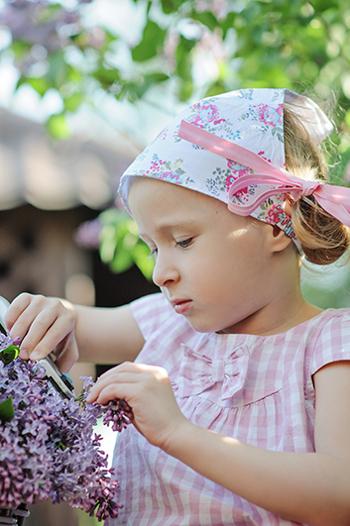Pruning
Duration/age

The sun has been shining, the plants have all grown and now it is time to prune. Talk with your child about which plants need to be pruned and how you will do it. Do they need to be cut in a special way or can you decide how much you want to cut off?
The roses have flowered and we need to cut off the dead heads so more buds will grow.
It is very difficult to walk down the path by the side of the house as the bushes have grown too big. We need to cut them back to the edge of the path.
Once you have identified what you will prune talk to your child about how much of the plant will be cut off. Will it be the tip of the plant or a dead flower? Will you cut the plant back to line up with the edge of the path?
You can use your scissors to cut the dead flowers off the rose bush. You need to look carefully to find the next leaf growing on the stem. That is where you need to cut.
Talk with your child about the different types of plants. Some can be pruned at any time of the year, compared to other plants that can only be pruned once a year at a special time.
We can prune back the rosemary hedge any time of the year but the fruit trees are only pruned once a year.
Materials you will need
- Scissors
- Plants
- Your eyes and hands
Skills this activity improves
Why does this matter?
Walking through the garden and noticing changes as they occur helps children develop observation skills. When children are able to notice differences and changes they are able to use this information to sort and group. Sorting and grouping is the beginning of classification.
As children refine their observation skills they begin to notice small differences between objects. Noticing small differences is important for reading and writing. When children don’t notice small differences they are not able to distinguish between:
- c and o
- m and n
- p and q
Talking about the changes in the garden and the different seasons helps children to develop a rich vocabulary. Having a rich and expanded vocabulary helps children to develop reading skills and to talk with a broader group of people.
What does this lead to?
The development of a rich vocabulary and keen observational skills helps children to become confident readers.
When they are able to quickly see the differences in letters they do not need to stop and work out each letter, but will begin to read the word as a whole. Once they can do this or recognise and remember the word on sight, they will improve the speed and accuracy of their reading. This helps them to gain meaning from the whole sentence.
As you walk around the garden you will be looking at the trees and the leaves and then classifying them into different groups - such as deciduous, citrus, fruit tree, and flowering. Learning how to sort, group and classify helps children to problem-solve and understand how to interact with the object.
Language to use
- Long, short
- Cut, prune, trim, tip
- Top, bottom, edge
- Hedge, stem, leaf, flower, bush, trunk, tree
- Off, on
- Against
- All, some, most, few
- Thick, thin
Questions to use
- How much do we need to cut off the bush?
- Should we trim the bush from the top or the bottom?
- Do we need to cut off all of the flowers or only some?
- Can you cut a tree branch with scissors?
Useful tips
- You might also like to take a look at the activities Planting a garden you can eat and Seasons.
- Remember to talk to your child in your home language.
More ideas
Next time your child is playing with playdough add scissors. They can practise cutting different lengths and through different thicknesses.
Variation by age
Three to five year olds
- Add the pruned bits of the plants to the sandpit. Your child can create their own sandpit garden.


